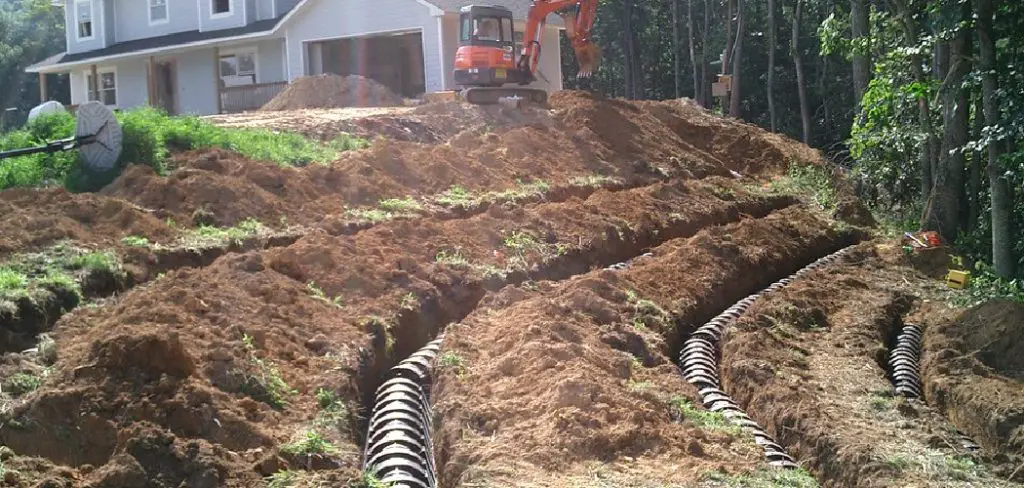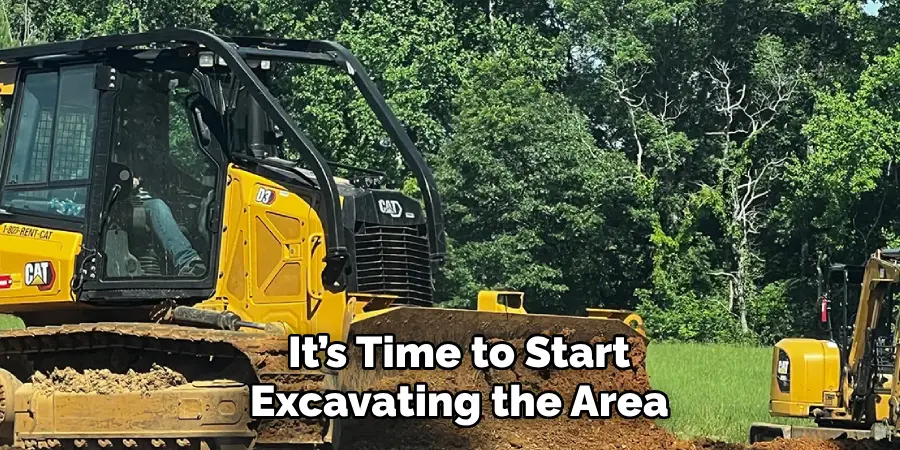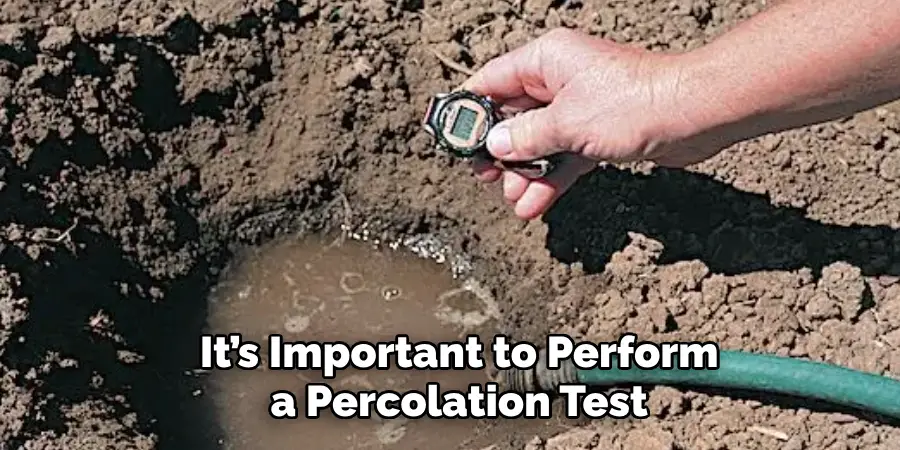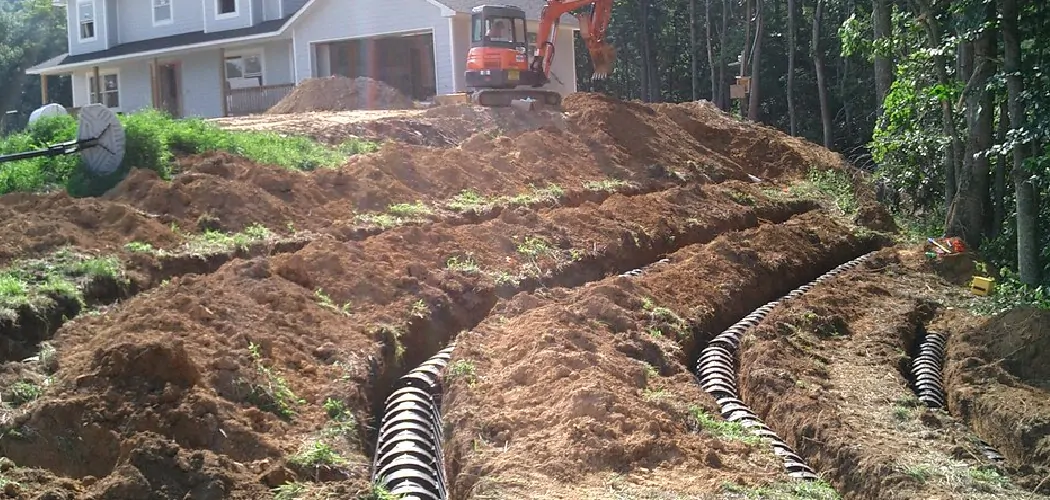Replacing a septic drain field is a necessary task for homeowners who have septic systems. The drain field, also known as the leach field, is an important component of the septic system as it helps to remove contaminants from the liquid waste that flows out of your septic tank.
Over time, the drain field can become clogged or damaged due to various factors such as excessive water usage, soil compaction, or tree root intrusion.

Replacing a septic drain field can be a daunting and expensive task. However, there are several advantages that make it worth the effort. Firstly, replacing a septic drain field is essential for maintaining proper sanitation and preventing health hazards.
A failing or inadequate drain field can contaminate groundwater and pose serious health risks to humans and animals living in the surrounding area. You can find step-by-step instructions on how to replace septic drain field in this blog article.
Step by Step Processes for How to Replace Septic Drain Field
Step 1: Inspect the Current Septic Drain Field
If you’re planning to replace your septic drain field, the first thing you need to do is inspect the current one. Look for any signs of damage such as pooling water, foul odors, or slow draining toilets and sinks. These could be indications of a failing drain field.
Step 2: Determine the Size and Location for the New Drain Field
Before beginning the replacement process, you need to determine the location and size of the new septic drain field. This must be done in accordance with local regulations and should take into consideration factors such as soil type, topography, and distance from water sources.
In most cases, replacing a septic drain field will require obtaining permits from the local health department. These permits ensure that the replacement is done in compliance with regulations and can help avoid any potential legal issues in the future.
Step 3: Excavate the Area
Once you have all necessary permits, it’s time to start excavating the area for the new drain field. This involves digging up and removing the old drain field and any other obstructions in the area. It’s important to follow safety guidelines and use proper equipment during this step.

After excavating, the area needs to be prepared for installation. This includes leveling the ground, adding a layer of gravel, and installing any necessary components such as distribution boxes or septic tanks.
Step 4: Lay Out Perforated Pipes
Perforated pipes are an important component of a septic drain field as they allow the effluent to be distributed evenly throughout the drain field. Once the area is prepared, these pipes need to be laid out in a specific pattern according to the size and layout of the drain field.
Once the pipes are in place, they need to be covered with a layer of gravel followed by soil. This helps to prevent clogging and aids in the drainage process.
Step 5: Perform a Percolation Test
Before completing the installation, it’s important to perform a percolation test to ensure that the soil can effectively absorb the effluent from the septic tank. This test involves digging a hole, filling it with water, and measuring how long it takes for the water to drain.

To prevent any buildup of gases in the system, it’s important to install vent pipes on top of the septic tank. Clean-outs should also be installed to allow for easy access in case of any future maintenance or repairs.
Step 6: Backfill the Area and Perform Final Checks
Once all components are in place, the area can be backfilled and the final checks can be performed. This includes checking for proper functioning of the septic system and ensuring that all connections are secure.
Tips for How to Replace Septic Drain Field
- When working on the septic drain field, be sure to wear protective clothing such as gloves, goggles and closed-toe shoes. This will help prevent any injuries or accidents from occurring.
- Before beginning any work, make sure to locate the exact location of your septic tank and drain field. This will prevent you from accidentally damaging any other underground utilities.
- While digging or excavating, be mindful of any nearby structures or trees that could be damaged. It is important to plan your work carefully and avoid causing any unintended damage.
- Be cautious of any potential hazards such as gas lines or electrical wires that may be present near the septic drain field. It is best to contact your local utility company before beginning any work to ensure proper precautions are taken.
- Always follow the manufacturer’s instructions when using any tools or equipment for replacing the septic drain field. This will ensure proper and safe usage of the equipment.
- If you are unfamiliar with the process of replacing a septic drain field, it is best to hire a professional. Attempting to do it yourself without proper knowledge and experience can lead to costly mistakes and potential dangers.
- Properly dispose of any waste or debris generated during the replacement process. This will help prevent contamination and maintain the overall functionality of your septic system.

By following these step-by-step processes and tips, you can successfully replace your septic drain field and maintain a properly functioning septic system. Remember to always follow local regulations and guidelines to ensure the safety of your household and surrounding environment.
What Are Some Signs That Indicate the Need for a Drain Field Replacement?
There are a few key signs that may indicate the need for a drain field replacement. These include:
1. Frequent Clogs
If you find yourself dealing with frequent clogs or backups in your septic system, it could be a sign that your drain field is not functioning properly. This can happen when the soil becomes too compacted and unable to absorb water.
2. Foul Odors
A healthy drain field should not produce any noticeable odors. If you start to notice a strong sewage smell around your property, it could mean that your drain field is failing and needs to be replaced.
3. Slow Draining
If your sinks, toilets, and showers are all draining slowly or backing up, it could be due to a clogged or failing drain field. This is because when the drain field is not functioning properly, it can’t handle the amount of water and waste being sent to it.
4. Lush Grass
While a healthy drain field can actually contribute to a greener lawn, an overly lush patch of grass in your yard could be a sign that something is wrong. This could mean that there is a leak in your drain field, causing excess water and nutrients to be distributed in one area.
5. Standing Water
If you notice standing water or wet spots near your septic tank or drain field, it could be an indication of a problem. This could mean that your drain field is not draining properly and becoming flooded.
6. Sewage Backup
In the worst-case scenario, a failing drain field can lead to sewage backup in your home. If you experience this, it is important to get a professional inspection and potentially replace the drain field as soon as possible.

If you notice any of these signs, it is crucial to address them promptly. Ignoring a failing or clogged drain field can lead to more serious and expensive problems in the future. It is important to regularly maintain your septic system and have a professional inspection every few years to catch any potential issues early on.
Are There Any Environmental Regulations or Concerns to Consider During a Septic Drain Field Replacement?
Yes, there are several environmental regulations and concerns to consider when it comes to replacing a drain field for your septic system. First and foremost, it is important to ensure that the replacement process is done in compliance with local and state regulations. This may include obtaining permits or following specific guidelines for proper disposal of old materials.
Additionally, special care must be taken during the replacement process to prevent any potential contamination of the surrounding soil, groundwater, or nearby bodies of water. This can be achieved by properly disposing of old materials, using environmentally-friendly products and methods during installation, and closely monitoring the new drain field for any leaks or issues.
It is also important to consider the environmental impact of your septic system in general. A failing or improperly functioning drain field can cause pollution and harm to the environment, including nearby vegetation and wildlife. Regular maintenance and prompt attention to any signs of issues can help mitigate these concerns.
Conclusion
In conclusion, while the process of replacing a septic drain field may seem daunting at first, it is ultimately necessary for the proper functioning and longevity of your septic system. However, there are some potential disadvantages to keep in mind before starting this project. Furthermore, there is no guarantee that the replacement will be successful or that it will fix any underlying issues with your septic system.
In some cases, there may still be problems with the drainage or overall functioning of the system even after a new drain field has been installed. It is important to carefully weigh these potential disadvantages before deciding to replace your septic drain field. I hope reading this post has helped you learn how to replace septic drain field. Make sure the safety precautions are carried out in the order listed.

